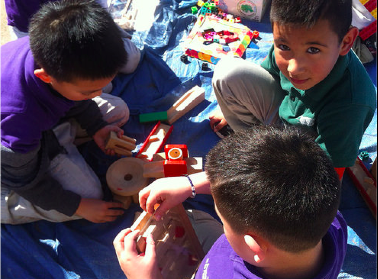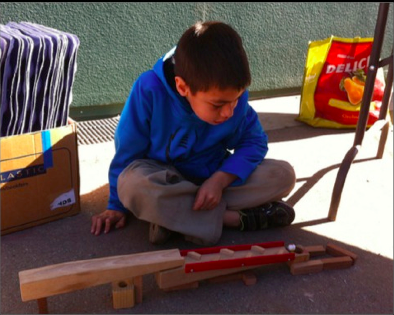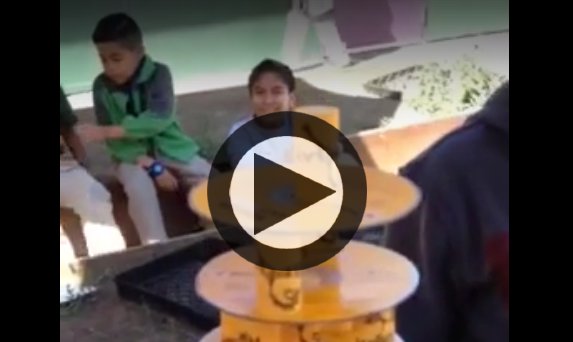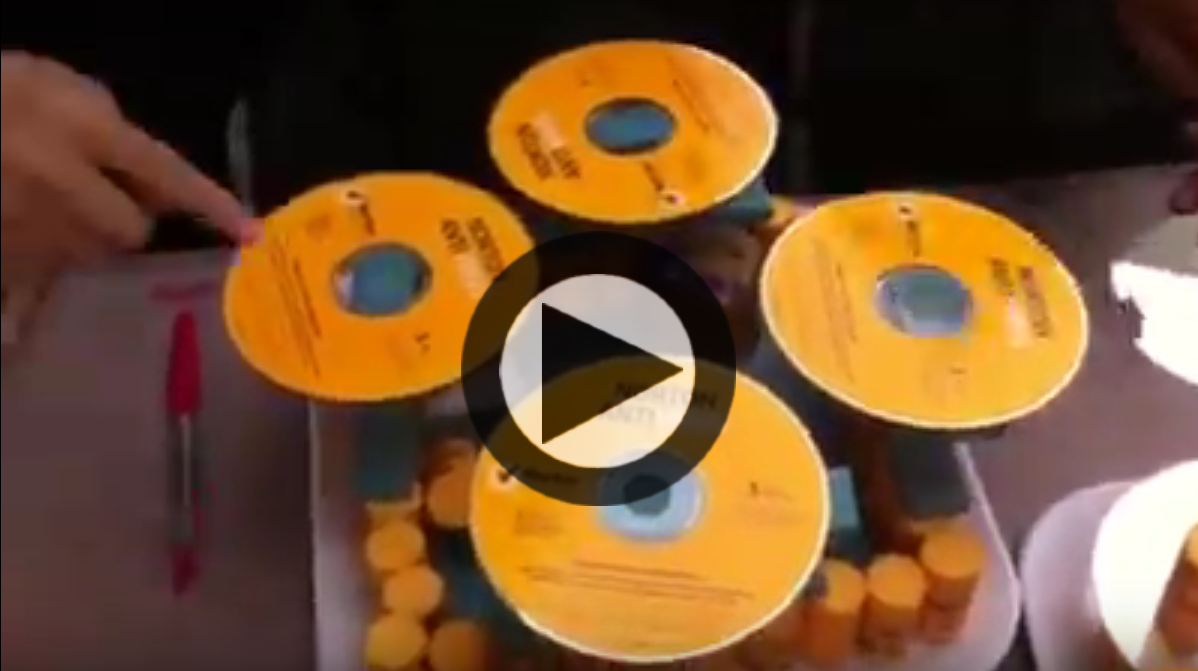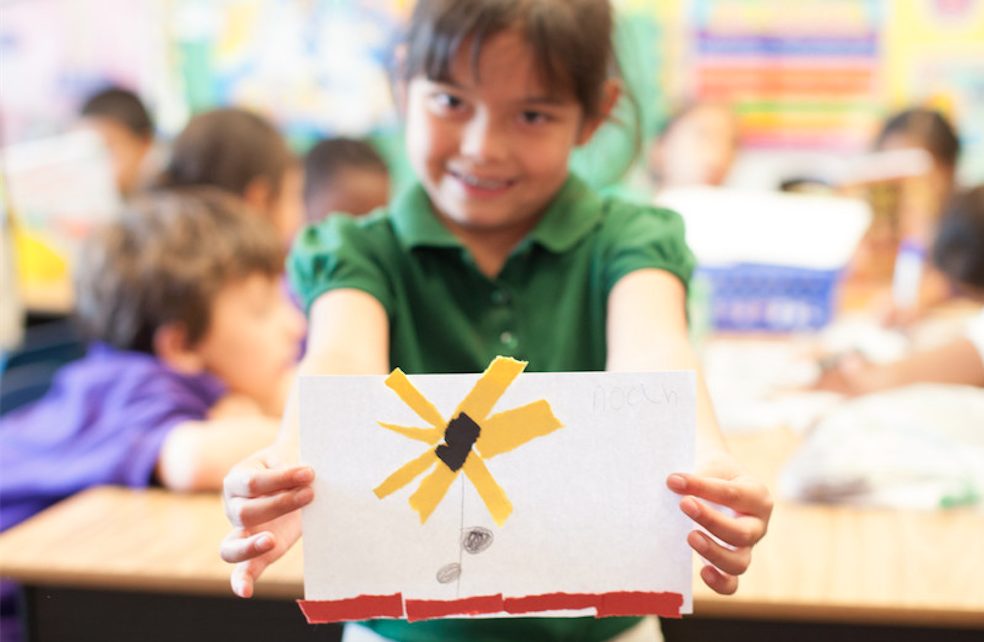
Art Class Revisited: Rocketeers Envisioning Ideas, Solving Problems & Building Their Future
by Alexis Hamilton, Enrichment Center Coordinator, Sí Se Puede Academy
What do visual artists do? I asked this of my K-5th grade students at the beginning of last year, and in all grades they unequivocally replied, “Artists paint.” The occasional eye roll implied, “Hello? Duh?” Even five-year-olds had already tacitly accepted the cliché that creativity equals craftsmanship.
By the end of the year, this answer had changed. While student artists at Sí Se Puede Academy still paint, they can also do so much more. In about 25-30 hours of art class, our students practice the eight Studio Habits of Mind that working artists use and that underpin creative problem solving. They learn these eight mental habits through art experiences, but then can apply them to every facet of life and work in the 21st century. Follow along as I explain what we changed in art class, how we changed it and why we changed the perception that artists paint and paint alone.
The New Purpose (and Growing Importance) of Arts Education
To understand what artists do, go back with me for a moment to the days before popular photography.
Traditional art education as we know it, probably first defined by ancient Greeks and continuing through the great academies of Europe, focused on creating a cadre of craftsmen who could represent the world with photographic realism.
Throughout history the arts could be decorative, beautiful and even inspirational, but on a fundamental level, the purpose of art was to communicate visual information. Without Snapchat, Twitter, Instagram and the other ways we have today to instantly make and distribute images, painting and drawing were once the only medium to know how the world looked beyond your village. Therefore, the purpose of art education was craftsmanship: the ability to make realistic art products. Craftsmanship is still the guiding purpose of many art programs in elementary schools today.
Fast forward a few generations. Early impressionists and cubists like Matisse and Picasso figured out photography would make realistic art increasingly irrelevant; in response, they reinvented their art and broke free of convention. These roots of modern art lead us to consider a new purpose for art education: providing an arena where students can practice creative problem solving skills and where they can learn to express ideas and feelings for which words are inadequate. Today in a world where visual communication is as easy as snapping a selfie on Instagram, the value of artistic realism is secondary to the ability to decide what kind of image to take and why it matters. The power lies in the ability think like an artist.
Cindy Meyers Foley of the Columbus Museum of Art and Harvard University’s Future of Learning Institute explains the shift in 21st century art education: “Art’s critical value is to develop learners who think like artists, which means learners who are creative, curious, that seek questions, develop ideas and play.”
But that begs the question: How do artists think?
Defining Creative Thinking Skills
Research from Dr. Lois Hetland has given us some answers. In collaboration with the US Department of Education, with support from The Getty Trust and Harvard Project Zero, she researched and documented the kinds of thinking that develop through practicing and studying art (Hetland et. al. Studio Thinking: The Real Purpose of Arts Education. 2007).
She found that the arts teach flexibility in thinking, encourage expression and build imagination, based on eight studio habits: stretch and explore, express, develop craft, envision, understand community, observe, engage and persist and reflect. Using these studio habits, the arts teach students the mental flexibility needed to shift direction in their thinking, and they help students find links between ideas in other areas of study like math, science and ELA. Hetland pioneered the idea that arts education matters for many reasons, but its most important contribution lies in providing students with an engaging sandbox for testing their ability with a variety of thinking skills.
Teaching for Artistic Thinking and Behaviors: Building These Skills
The accepted current best practice for teaching the studio habits of mind is a methodology called Choice Art or TAB (teaching for artistic behavior). A TAB classroom is set up like an art studio. Students are encouraged to work like artists, experimenting with a wide variety of artistic media and processes in an effort to realize and organizing their own creative projects based on individual ideas and interests.
Choice Art can be implemented in different ways such as limiting choices that students can make based on the needs of a class and the learning objectives. For example, for our symmetry math-art collaboration last spring 4th graders were allowed to choose the medium they wanted to use to implement the teacher-directed theme of symmetry. In contrast, students are sometimes expected to bring their own ideas to the studio as well as choose the material that they think best allows them to fully explore their thoughts. Examples of this are often seen in the construction area where students use blocks to challenge each other as they explore various properties of balance, force and motion. Samples of this work are included in videos at the end of this article.
Redefining Art Class at Rocketship
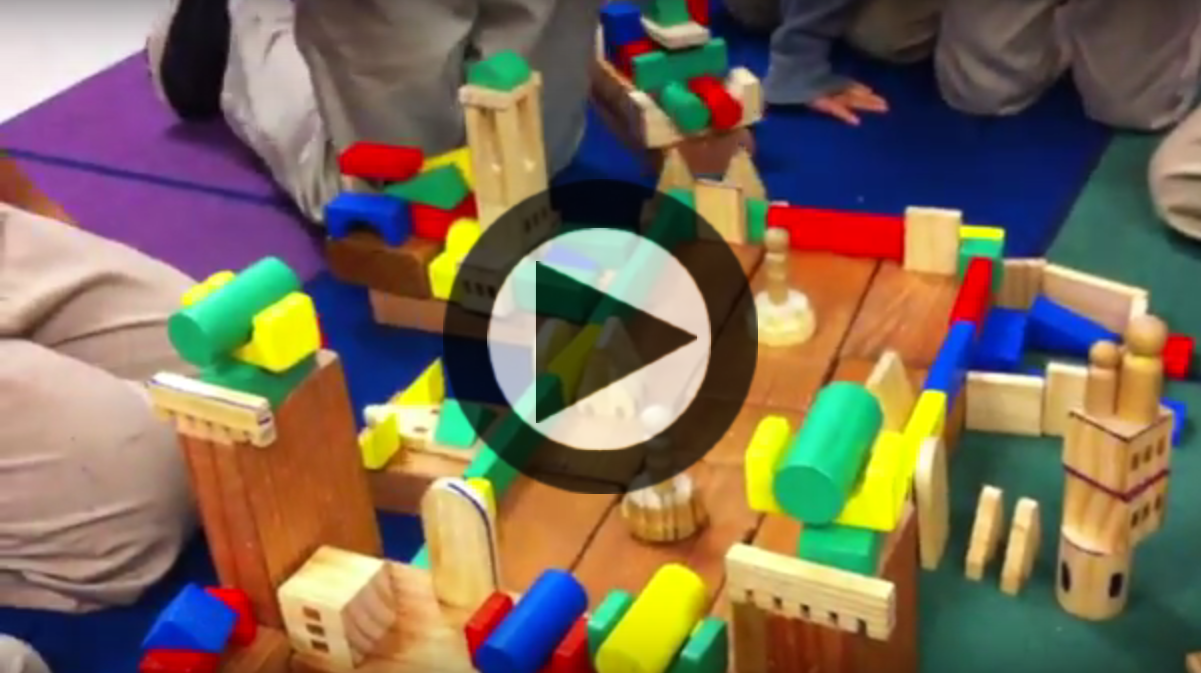
These first graders learned that the key to creating big, exciting projects was big collaboration – working together in large groups to pool resources & ideas.
Arts enrichment at Rocketship is a key part of our overarching goal to eliminate the achievement gap. Enrichment helps Rocketeers practice the thinking skills they will need to succeed in college, and in the world of work. We use art as a way to teach the Studio Thinking skills using TAB (Teaching for Artistic Behavior) methodology, because it is considered best practice for making the Eight Studio Habits real. As students learn to organize their own work, they engage more completely and create connections between what they have learned in other areas. They exhibit creative thinking, flexibility, expression, imagination, collaboration, community, curiosity and play.
Our Rocketeers must be prepared to work in a world that demands creative and collaborative thinking. While our students must be firmly grounded in specific skills like reading and math, they will enter a workforce that values knowledge workers — people who can think independently to solve problems but also work in collaboration with others. Gone are the days when a boss defined and initiated the tasks workers would complete by following step-by-step instructions. Knowledge work requires the same habits of mind that Choice Art is designed to foster.
Peter Drucker, the management expert credited with coining the term defines “knowledge workers” as people who perform multidisciplinary, complex and unpredictable work. They analyze information and apply expertise in a variety of areas to solve problems, generate ideas or create new products and services.
Arts education based on the Choice Art model, and the habits of mind it can teach will prepare our Rocketeers to be work-ready citizens of the future. In art class our Rocketeers learn to independently apply the eight Studio Habits of Mind to develop the skills of envisioning ideas, solving problems and thinking both flexibly and creatively — the thinking habits they need to successfully build their future.
To find out more about the disconnect between arts education and creativity and how to bridge the gap, watch Cindy Meyers Foley’s “Why We Need to Reimagine Arts Education.”
Share your favorite Rocketeer artwork ➟ @RocketshipEd
Alexis Hamilton has taught art since 2011 after she retired from 30 years as a PR and Advertising executive. She is in her 3rd year of teaching at RSSP. She almost holds a multi-subject teaching credential (pending RICA results). Before turning her hand to high-tech marketing, she launched and managed a multi-year program with funding from the National Endowment for the Humanities, to develop curriculum around Southwest Archaeology for K-7th grade classrooms in eight school districts and sixty classrooms in the area around Mesa Verde, Colorado. She and her husband were married shortly after the fall of the Berlin Wall and have raised three teenage girls. She loves sharing creative explorations and learning with Rocketeers of all ages.
Published on August 26, 2015
Read more stories about: Teacher Experience.



